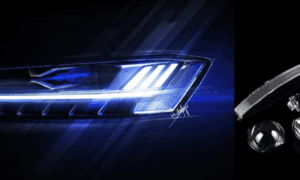Electric vehicles (EVs) have captured the imagination of consumers and industries alike. The transition from internal combustion engines to electric drivetrains is no longer a distant possibility—it’s a growing reality backed by innovations in power storage and energy efficiency. Consumers are becoming more eco-conscious, and governments are enforcing stricter emission standards, creating a favorable environment for EV adoption. Central to this shift is the transformation of battery technology, which dictates how far an EV can travel, how fast it charges, and how long it lasts on the road. These improvements are redefining consumer expectations.
Energy Density and Vehicle Range
One of the most critical factors influencing EV performance is energy density. This metric defines how much energy a battery can store relative to its size or weight. High energy density means longer driving ranges and reduced weight—two essential components of a successful EV. The push for higher energy density has led to widespread research into lithium-silicon and lithium-metal anodes, as well as advanced electrolytes. Research from the U.S. Department of Energy notes that lithium-metal batteries could increase range by up to 50%. Companies like Sila Nanotechnologies and Solid Power are exploring next-gen chemistries that reduce weight while maintaining capacity. Greater energy density not only extends range but enables sleeker vehicle designs and larger cabin space by reducing battery footprint. With more travel per charge, drivers feel less range anxiety, boosting confidence in long-distance EV travel.
Charging Speed and Infrastructure Compatibility
Improvements in battery charge times have become a game-changer for electric mobility. Current-gen EVs typically take between 30 minutes and several hours to charge, depending on the infrastructure. The surge in demand has prompted investment in solid-state batteries and ultrafast-charging technologies. These advancements in battery technology for EVs not only promise faster charging but also minimize thermal issues, which can degrade battery life over time. Companies like StoreDot and QuantumScape are pushing the envelope, claiming five-minute charging capabilities in lab conditions. These innovations are also shaping the global charging network, as newer stations are being built to handle higher voltages and faster throughput. Some countries are incorporating charging lanes into highways. Faster, safer, and widely available charging helps make EVs a more convenient choice for the masses.
Lifespan and Battery Management Systems
Battery lifespan remains a key concern for both manufacturers and consumers. Extended battery life means lower costs, fewer replacements, and reduced environmental impact. Companies are now using AI-based battery management systems to regulate charge cycles more intelligently, reducing stress on cells and ensuring a longer operating life. Some battery packs now promise life spans exceeding 500,000 miles, according to Tesla’s internal research. Longevity also enhances resale value, creating a stronger secondary EV market. Predictive maintenance software can alert users to deteriorating performance before it affects drivability. Optimized systems prevent overcharging and excessive discharge. These efforts preserve long-term battery health and improve the ownership experience across the board.
Cold-Weather Reliability and Thermal Innovation
Another crucial area of development is the improvement of cold-weather performance. Traditional lithium-ion batteries often struggle in sub-zero temperatures. New chemistries and thermal management systems are helping EVs operate efficiently in harsher climates. These solutions include self-heating battery packs and electrolyte additives that maintain conductivity even in extreme cold. A study by the Idaho National Laboratory revealed that battery performance can drop by 40% in cold conditions, highlighting the need for innovation. Automakers are now integrating heat pumps and insulation directly into EV battery modules. Drivers in colder climates benefit from more predictable range and performance. Consistent winter reliability is critical for broad adoption across all geographic regions.
Safety Enhancements and Fail-Safe Engineering
Safety is a non-negotiable in battery innovation. Battery fires and failures have historically plagued the reputation of EVs. Engineers are addressing this by integrating fire-resistant separators, advanced cooling systems, and fail-safes that disconnect the battery in the event of a crash. These technologies significantly reduce the risk of thermal runaway, a dangerous chain reaction that can occur in faulty cells. Companies are adopting standards like ISO 26262 to ensure functional safety. Real-time diagnostics and intrusion detection are also being built into newer battery packs. Some systems can automatically isolate failing cells from the rest of the pack. These features protect passengers and build trust in battery-powered mobility.
Sustainability and Recycling Strategies
Perhaps one of the most promising developments is in recyclability and sustainability. As millions of EVs hit the roads, recycling spent batteries becomes a priority. New processes such as hydrometallurgical and direct recycling methods allow for efficient recovery of lithium, cobalt, and nickel. This reduces dependency on raw mining and aligns with global sustainability goals. The European Union has mandated battery recycling targets as part of its Green Deal. Companies like Redwood Materials and Li-Cycle are scaling closed-loop recycling systems that reclaim up to 95% of battery materials. Manufacturers are also designing batteries with end-of-life reuse in mind. Circular approaches are becoming the norm rather than the exception.
Cost Reduction and Scalability
Manufacturing advances have also lowered battery costs dramatically. A decade ago, battery pack prices hovered around $1,100 per kilowatt-hour. As of 2024, that number has dropped to under $150 per kWh, with some projections suggesting prices could dip below $100 by 2026. Much of this is thanks to gigafactories, automation, and better supply chains. These savings are passed down to consumers, making EVs more accessible than ever before. According to BloombergNEF, cost reductions could lead to price parity between EVs and gasoline vehicles as early as 2027. Economies of scale have brought electric mobility within reach of more drivers. Affordable technology is vital for global market expansion.
Design Flexibility and New Architectures
Advances in battery technology are also fueling progress in design and flexibility. The advent of modular battery systems and skateboard platforms allows automakers to build a variety of vehicle types using a single battery chassis. This modular approach supports faster production and opens the door to more customizable vehicle architectures. It also simplifies maintenance and reduces costs for automakers. Vehicle-to-grid (V2G) compatibility is another innovation enabling EVs to serve as backup power sources for homes or even supply electricity back to the grid. Some platforms now support battery swaps and wireless charging. These developments reflect a more integrated and adaptable future.

The synergy between battery innovation and EV adoption is undeniable. Better batteries mean better vehicles—more efficient, affordable, safer, and more sustainable. As research accelerates and investment pours in, the next generation of electric cars promises not only to rival but to surpass their gas-powered predecessors. With each leap forward in battery science, the case for electric mobility becomes stronger, more practical, and more compelling.



































